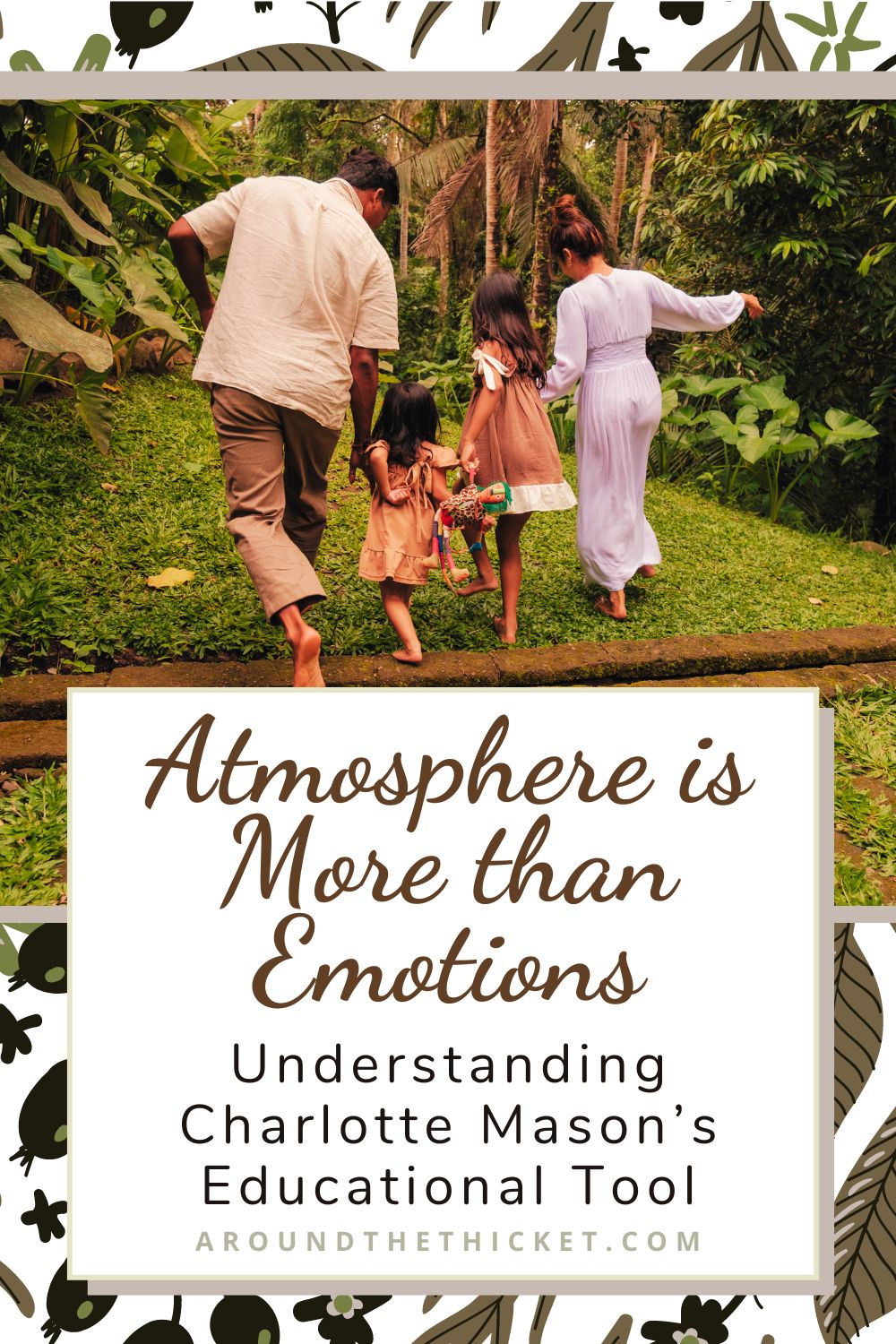Atmosphere is More Than Your Emotions
After a conversation earlier this week, I’ve been thinking over Charlotte Mason’s principle, “Education is an atmosphere”. It seems appropriate given that our warm weather this week has led to a stuffy, hot atmosphere, particularly in the house. Like most British people, we don’t have air conditioning, and our houses were built with more attention to keeping them warm rather than keeping them cool. So, for the week or so where the weather heats up, we rely on fans, open windows, closing curtains, and staying outside in the breeze and shade as much as possible. I do my best not to grumble, and to have a glass of ice water or a popsicle when the weather starts to get to me.
The stuffy atmosphere of my house is not my fault. I only have control over my response to it.
It is easy to misconstrue Charlotte Mason’s idea of atmosphere, and connect it too strongly to the emotional tone of our home. We see atmosphere in terms of gratitude, joy, patience, or cooperation. We measure it on the scale of how often we get frustrated with our kids or how much they bicker between themselves. And because we are often told that as moms, we set the emotional tone of our home, we bring all of the responsibility for atmosphere onto our own shoulders. If everyone is grumpy and bickering, then who needs to bring them out of it? Mom does!
Charlotte Mason, however, didn’t view atmosphere as the emotional tone of the home, although she did think that it contributed. Instead, atmosphere is much more like the weather. It’s not really something we control, but something that comes our way.
Atmosphere comes in the form of a new baby in the family. Everyone must learn patience, flexibility, and self-sacrifice.
Atmosphere can look like a pair of glasses getting broken and an emergency trip to the optician. We learn to make the best of a frustrating situation, and experience the effort and time it takes to repair broken belongings.
Atmosphere even includes the literal atmosphere, like our recent hot weather. We learn to not grumble and to take proactive steps to keep the house cool.
Of course, the emotions of the people in the home contribute to the atmosphere. If my child has a temper tantrum, that impacts everyone in the house. And it is appropriate and a mark of maturity for me as the parent to not be swayed by the immaturity of my children as they work through whatever atmospheric conditions brought about their calamity, and to help them grow in their own ability to self-regulate and navigate their feelings. This is hard to do when I am frustrated and full of self-pity.
But there is a difference between accepting negative emotions as part of our home’s atmosphere versus viewing them as personal failure. The point of atmosphere as an educational tool isn’t to give our kids a childhood that is absent from negativity or strife, but to give them experiences that grow their character through practical experience. This means that even when we as moms fail to ‘keep it together’, when we fall short of perfection, atmosphere is still working as an educational tool. We, and our kids, are growing in those moments, learning empathy, understanding, even forgiveness and reconciliation.
For more on atmosphere as an educational tool, check out my book, Before Curriculum!

A letter from me to you, every week.
Like this post? Join the Around the Thicket newsletter for more ideas, encouragement, and inspiration for your Charlotte Mason journey. You’ll also receive my audio read-along of Charlotte Mason’s School Education. Not sure? Find out more.

